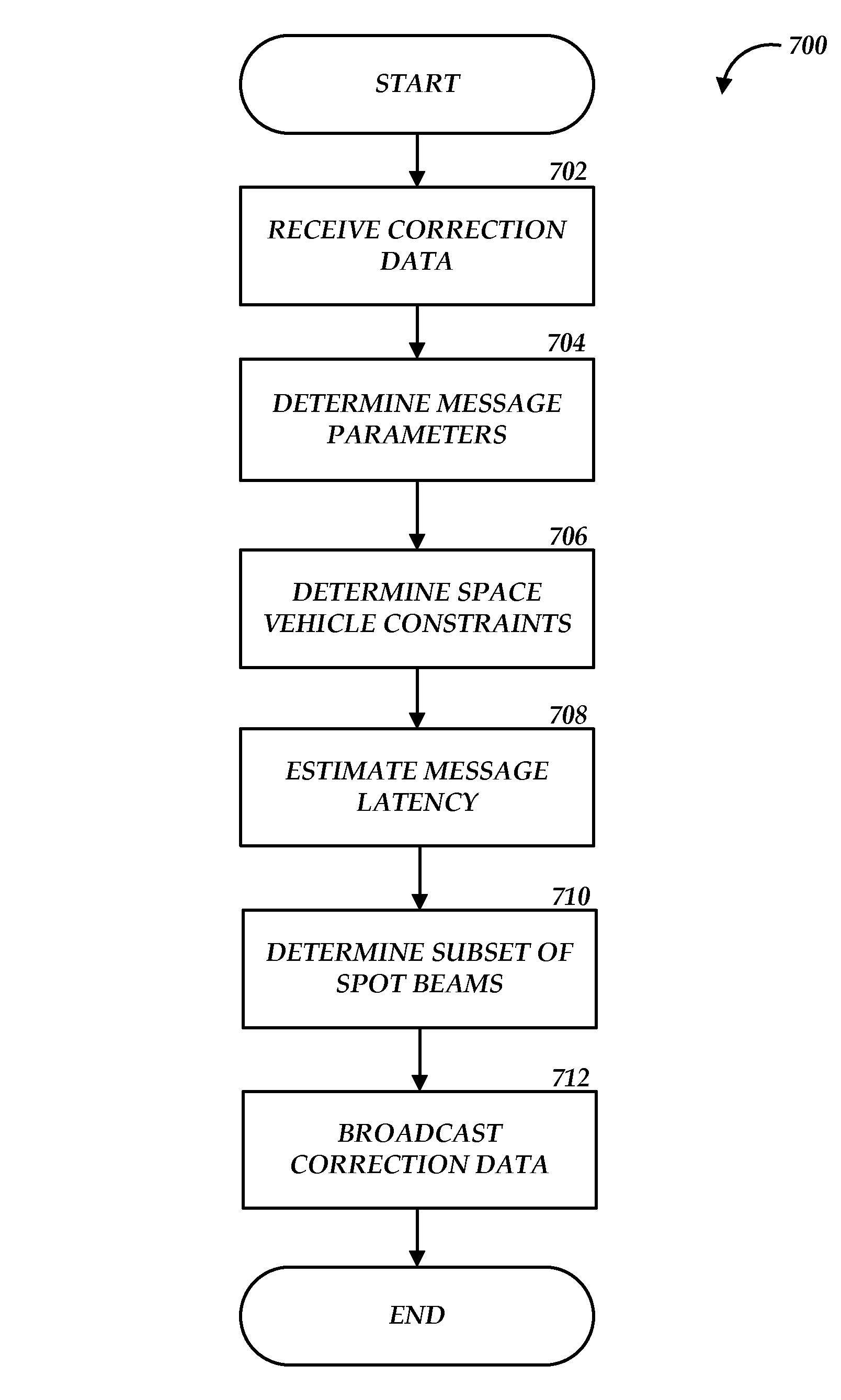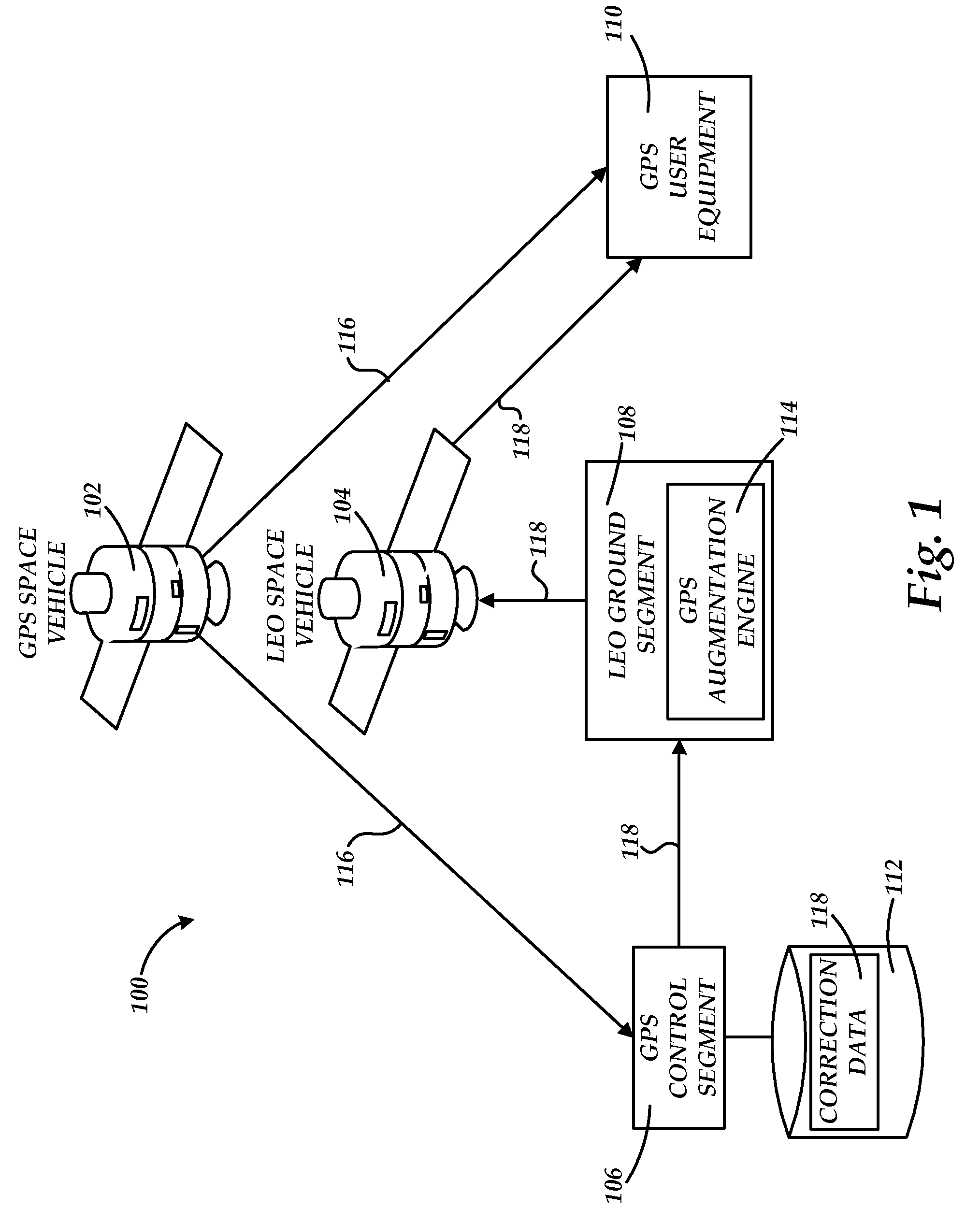Global positioning system accuracy enhancement
a global positioning system and enhancement technology, applied in the field of global positioning system accuracy, can solve the problems of increasing ttc bandwidth limitations, affecting and various types of errors, so as to reduce the errors inherent in gps data and improve the accuracy of navigation solutions calculated by user equipment receiving gps data and gps correction data.
- Summary
- Abstract
- Description
- Claims
- Application Information
AI Technical Summary
Benefits of technology
Problems solved by technology
Method used
Image
Examples
Embodiment Construction
[0021]The following detailed description is directed to methods and systems for augmenting the GPS to enhance accuracy. As discussed briefly above, GPS data broadcasted by the GPS satellite constellation is subject to errors that increase proportionally with the time from the last upload to the GPS satellites, or space vehicles, from the GPS control segment on the earth. To mitigate the error growth, and consequently increase the accuracy of the navigational position determinations made by the user equipment receiving GPS data from the GPS satellite constellation, the embodiments described below utilize a constellation of LEO space vehicles to relay GPS correction data to user equipment.
[0022]The user equipment may then utilize the GPS correction data received from the LEO space vehicle and the received GPS data from the GPS space vehicles to calculate position and other navigational data. Because embodiments described below utilize an existing constellation of LEO space vehicles th...
PUM
 Login to View More
Login to View More Abstract
Description
Claims
Application Information
 Login to View More
Login to View More - R&D
- Intellectual Property
- Life Sciences
- Materials
- Tech Scout
- Unparalleled Data Quality
- Higher Quality Content
- 60% Fewer Hallucinations
Browse by: Latest US Patents, China's latest patents, Technical Efficacy Thesaurus, Application Domain, Technology Topic, Popular Technical Reports.
© 2025 PatSnap. All rights reserved.Legal|Privacy policy|Modern Slavery Act Transparency Statement|Sitemap|About US| Contact US: help@patsnap.com



